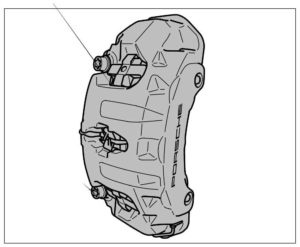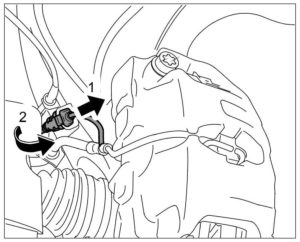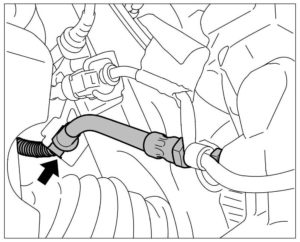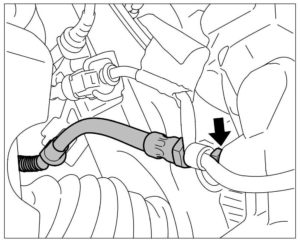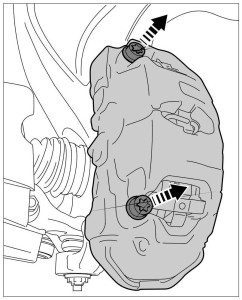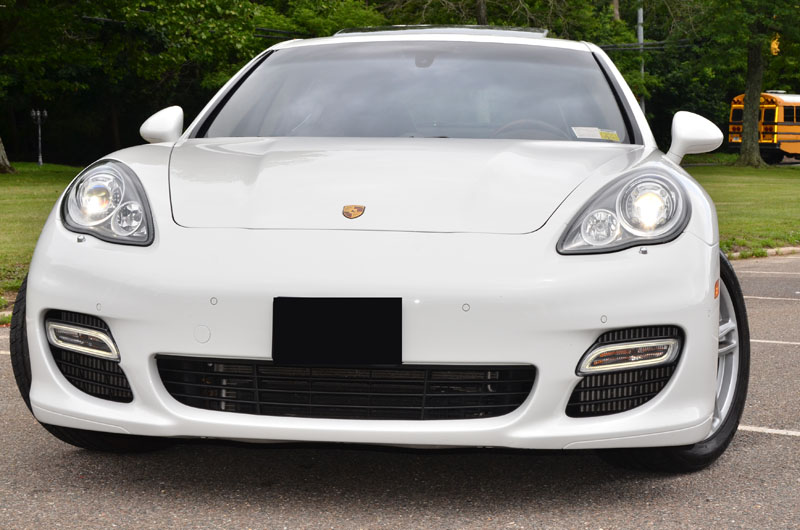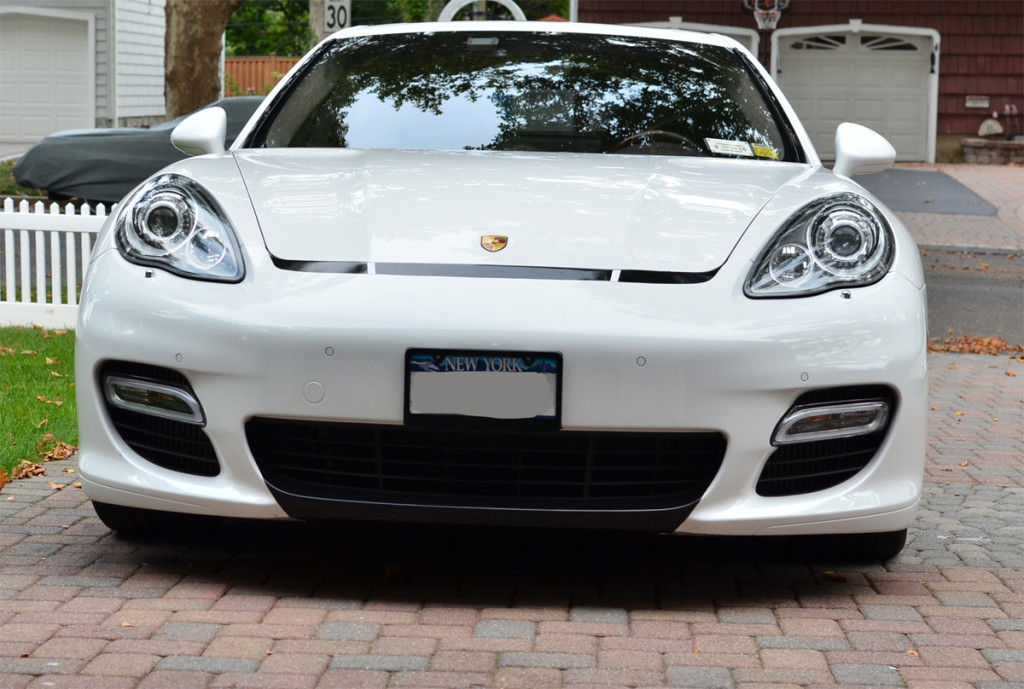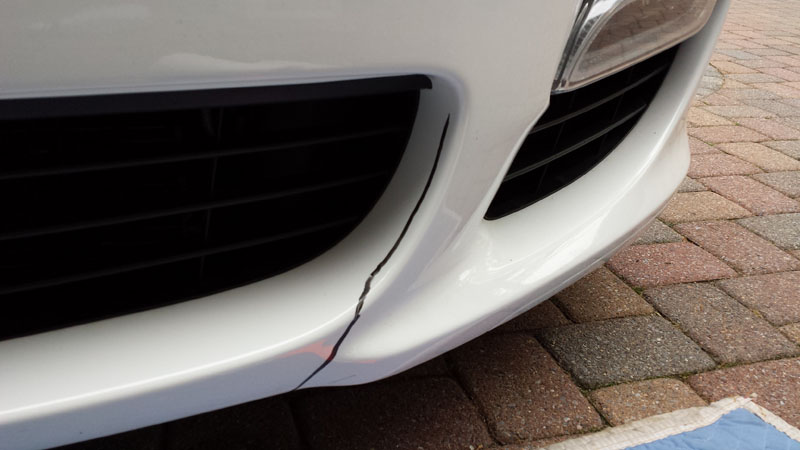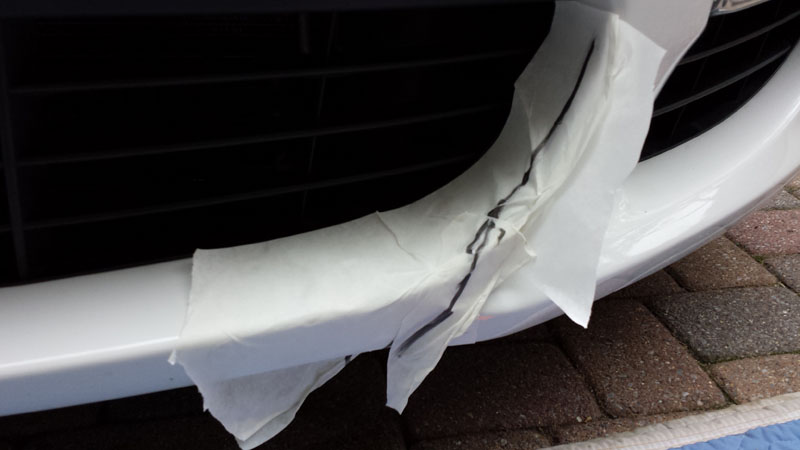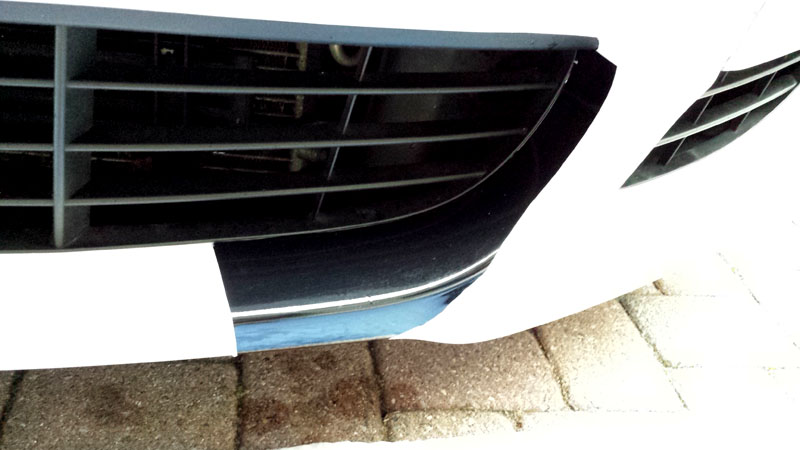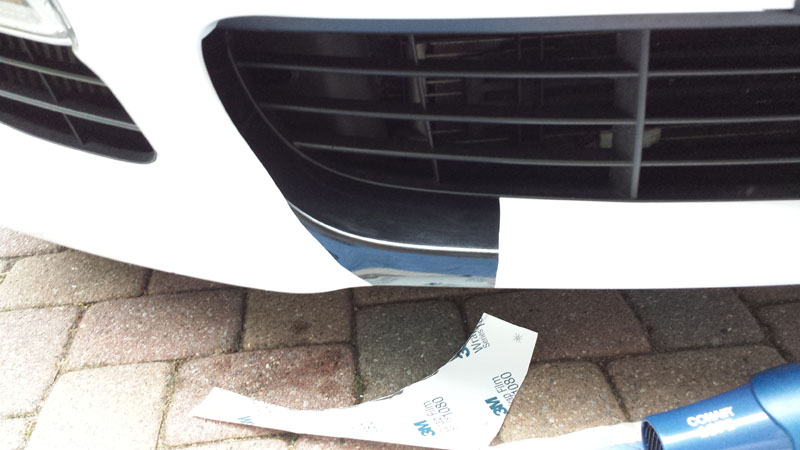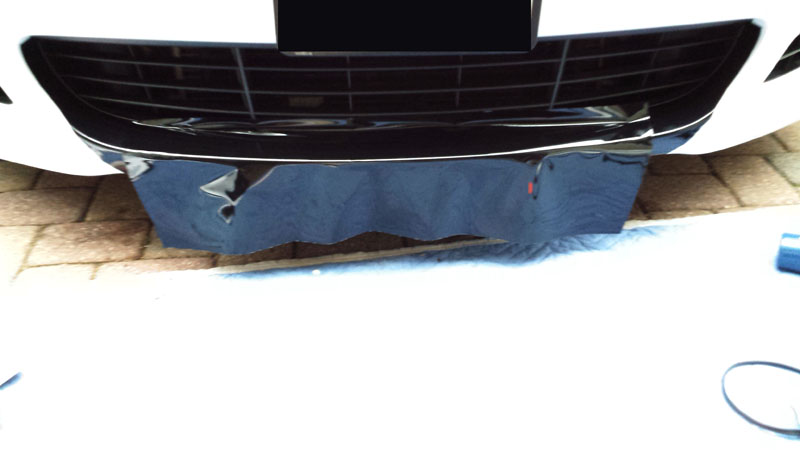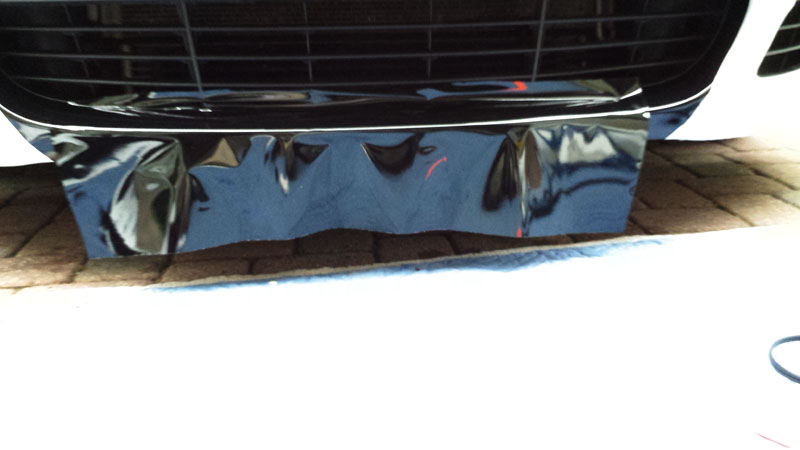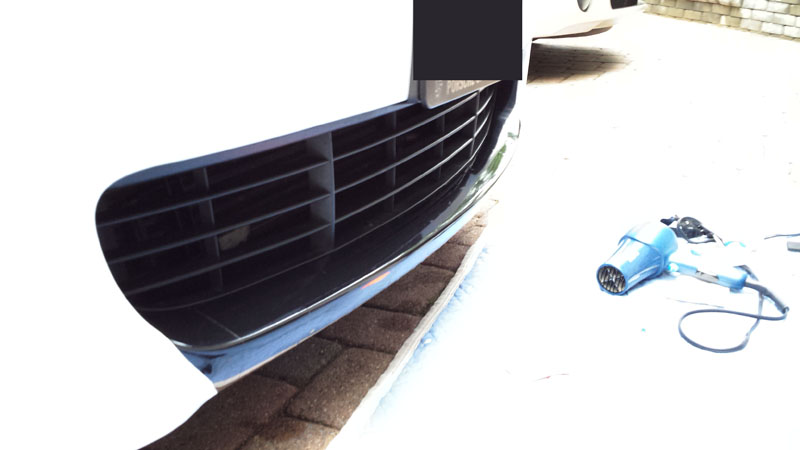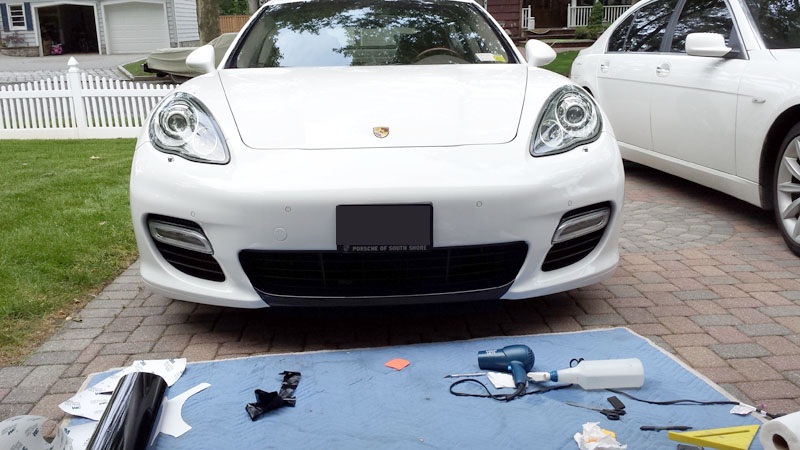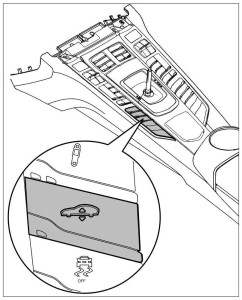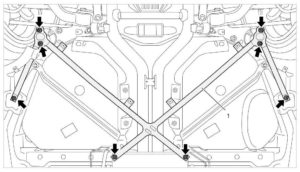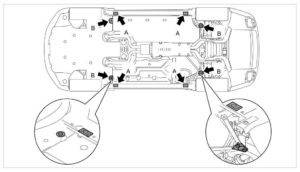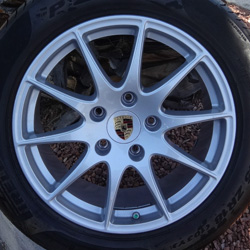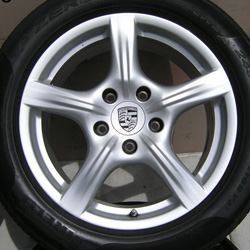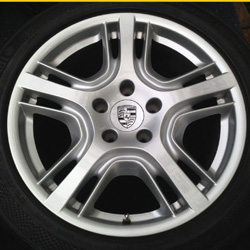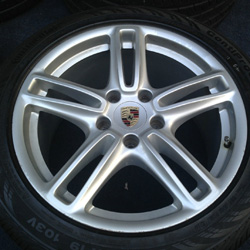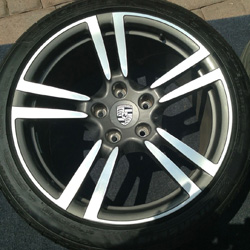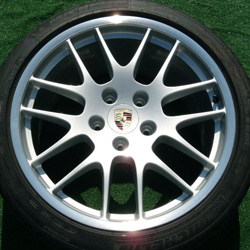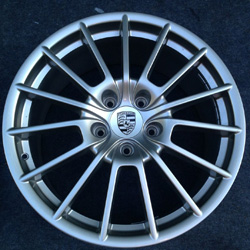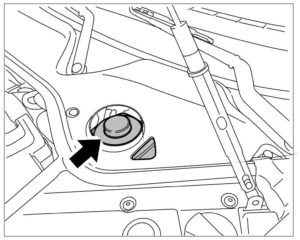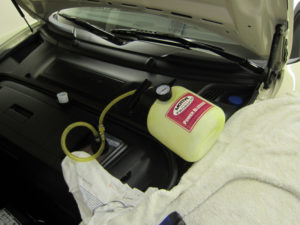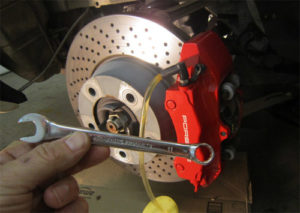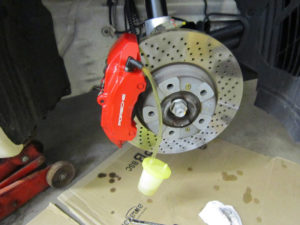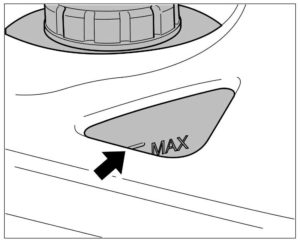1. Lift the vehicle. How to lift vehicle safely with air suspension.
2. Remove the wheel.
- Do not open the brake system.
- Do not loosen the brake hose from the brake caliper when loosening the brake caliper.
- The core of the warning contact wire must not be left exposed! It does not matter if the insulation is worn.
- If necessary, remove a little brake fluid from the reservoir by suction in order to prevent an overflow when the disc brake pads are pushed back.
- To gain better access for removal of the brake caliper, turn the steering fully either to the right or left.
- Protect brake caliper from paint defects using a suitable cloth
- Release and unclip the connector for the brake pad wear indicator -1 and 2- .
Connector, brake pad wear indicator
- Set the disc brake pads back slightly and uniformly using water pump pliers.
- Detach the retaining clip -arrow- for the cable of the brake pad wear indicator from the brake line.
Brake line holder
- Disconnect the brake line -arrow- on the brake caliper and collect the brake fluid in a suitable container.
Brake line on brake caliper
- Close off the brake line with a suitable plug.
- Never use an impact bolter to loosen and tighten the brake caliper on the wheel carrier.
- Remove brake caliper from wheel carrier => Brake caliper fastening screws.
Installing front brake caliper
The brake caliper is installed in reverse order.
Information
- Never use an impact bolter to loosen and tighten the brake caliper on the wheel carrier.
- Visually inspect the thread for the brake caliper and blow it out carefully if necessary using compressed air. Use goggles!
- Observe correct tightening torques -> 4X00IN Tightening torques for the brake system.
- Fit the brake caliper.
| 1.1. | Carefully fit the brake caliper and screw in assembly pin or a bolt in the top thread only by hand. |
| 1.2. | Screw in bottom brake caliper screws several turns by hand (this protects the thread!). |
| 1.3. | Remove assembly pin and screw in top brake caliper screw several turns by hand (this protects the thread!). |
| 1.4. | Screw in both brake caliper screws fully and tighten to the specified tightening torque. |
- Do not bend the brake lines.
- Secure brake line holders at the wheel carrier.
- For easier access to the holders, turn in the wheel carrier as required.
- Attach the brake line to the brake caliper.
- Fit the retaining clip for the cable of the brake pad wear indicator to the brake line.
- Clip in the connector for the brake pad wear indicator.
- Position disc brake pads by operating the brake several times.
Subsequent work
- Bleed the brake system. -> 470107 Bleeding brake system – see Bleeding Panamera Brakes
- Fit the wheel. Use assembly aids to help yourself align the holes (assembly pins) .
Bedding in the brake parts
New brake pads require a bedding-in period of approx. 200 km (124 miles)! Only then do they achieve their best friction and wear coefficient! During this period, the brakes should only be subjected to full stress at high speed in emergencies!
Read on: How to bed in your brakes ?



